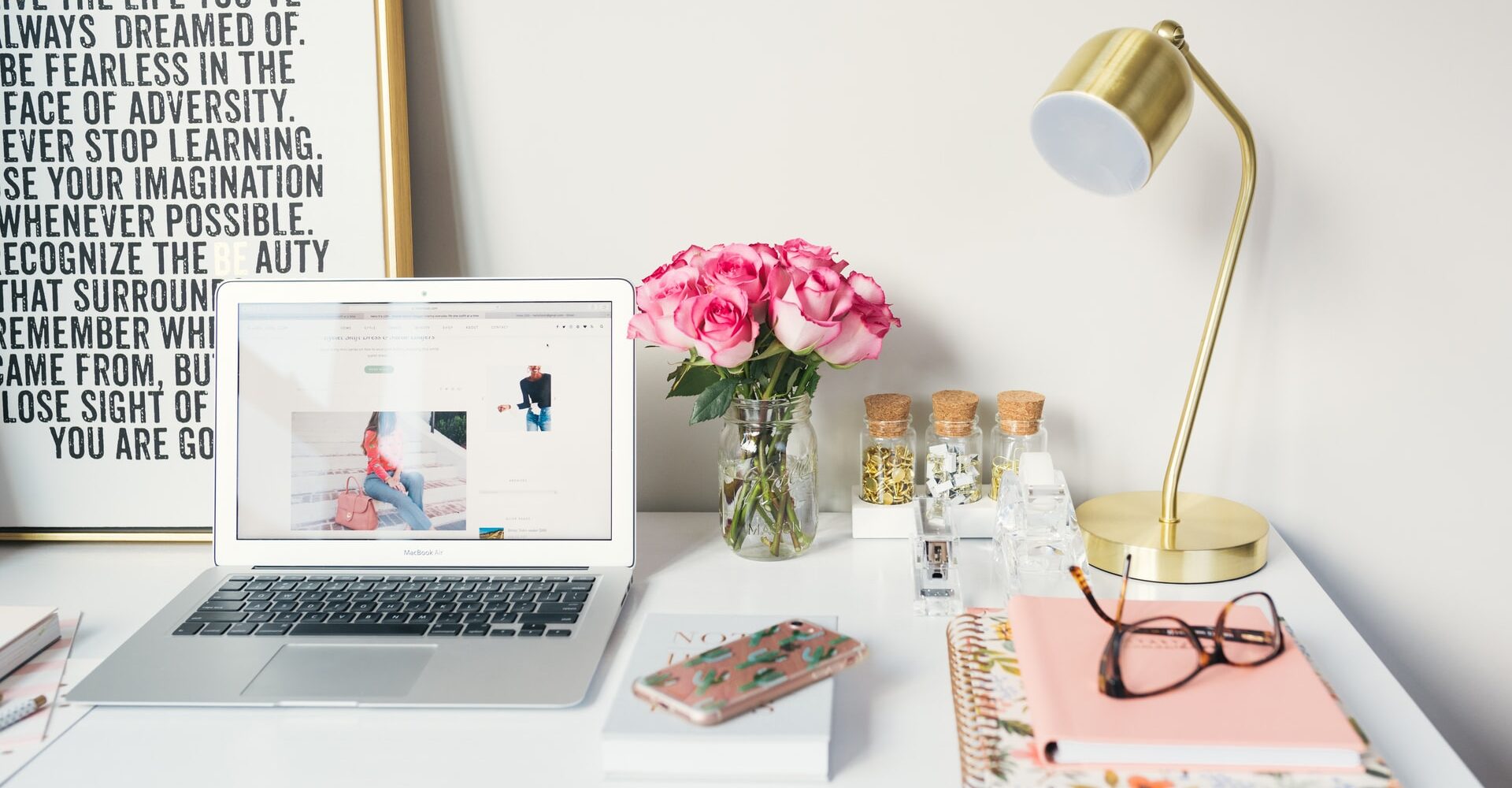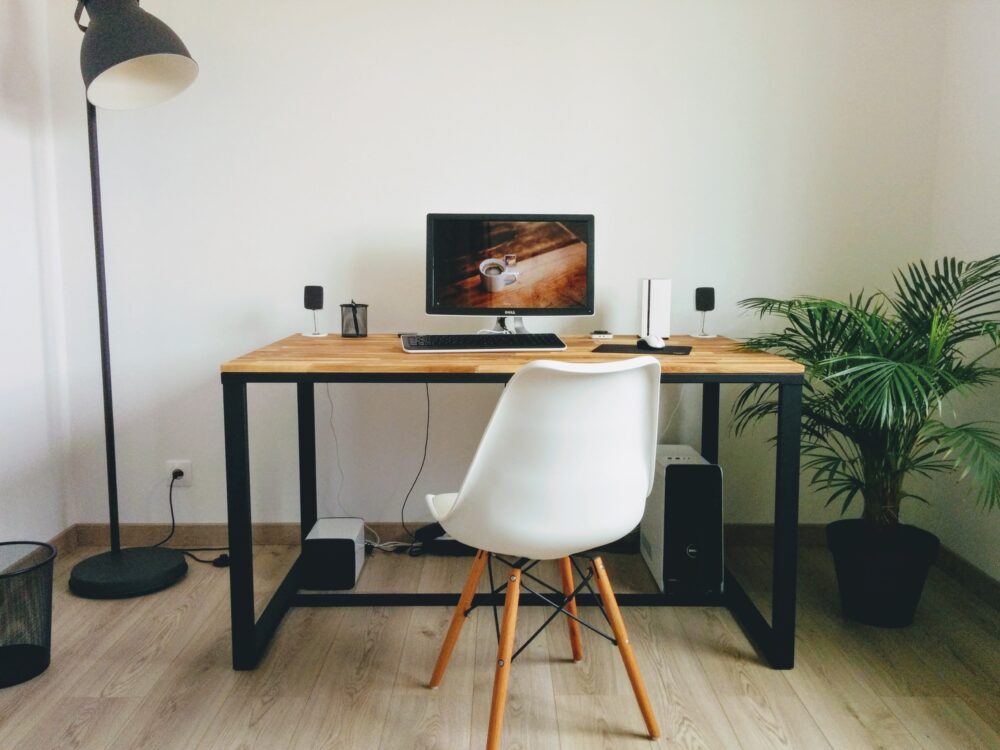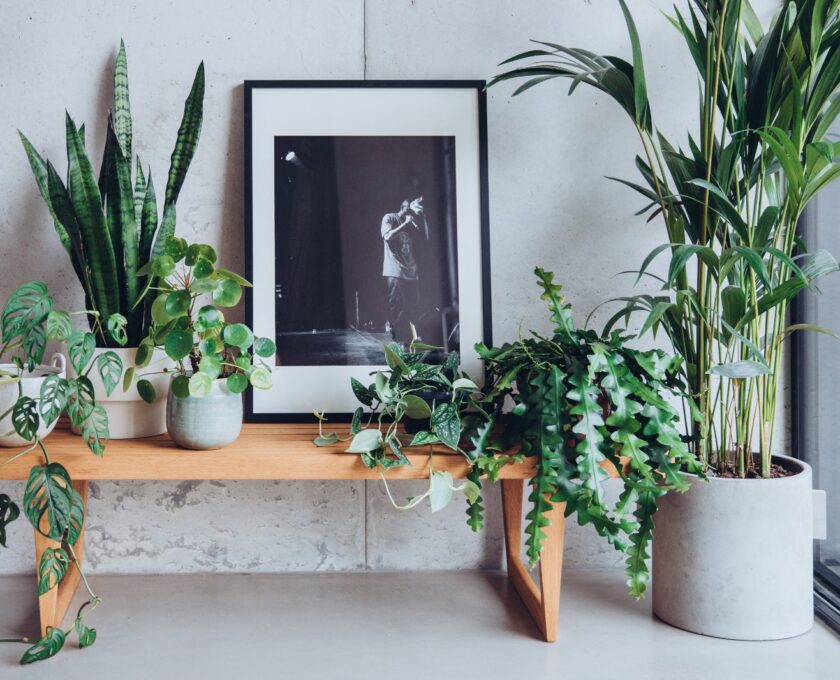August 28, 2020 WILDE NEWS
Working from Home? Here’s How to Create the Perfect Home Office Lighting
Working from home is ‘the new normal’ for many of us, which means there’s never been a better time to give your home office a refresh. Whether you’re creating a home office from scratch, doing a full refurb or just looking to make minor changes to your existing study area, lighting design is one of the most important factors to be considered when creating the perfect working from home space.
In this blog we’ll look at the practicalities and style considerations when it comes to choosing and arranging your home office lighting. Let’s start with the practicalities:
Why Home Office Lighting is So Important
Putting aesthetics aside for now, proper lighting is essential for creating a productive, healthy working environment. Ever caught yourself squinting at your screen or rubbing your eyes after a long day of work? It might be because you don’t have sufficient lighting in your workspace, or it might purely be the way your light sources are positioned. Either way, it’s easily fixed when you know how.
A well-lit home office is about more than just being able to see your computer keyboard or work surface. If executed correctly, good lighting design can:
– Reduce eye strain
– Boost motivation and productivity
– Help you feel more awake and alert during working hours
Poorly lit rooms combined with bright screens can force your eyes to work extra hard to maintain focus. By evening out the lighting levels, you can prevent your eyes from needing to compensate quite so much. This means less squinting and lower risk of headaches as well as reducing the risk of long-term eye damage.
As well as protecting your eyes from unwanted and unnecessary strain, good home office lighting will create a space that you actually want to be in, which is more important than ever now that so many of us are spending more time working from home. After all, it makes perfect sense that an office that feels dark and shadowy will inhibit your desire and motivation to get stuck into your work, while a room that feels light, bright and inviting will have the opposite, much more productive effect.
Now that we’ve covered the practical side of good home office lighting, let’s move on to how we actually create it.
The Layering Effect
Good interior design works in layers to create the final, overall effect, and lighting design is no different. Lighting needs to be built up layer by layer to create the perfect coverage, and each unique home study will have its very own perfect lighting arrangement that suits the room, the furniture and – most importantly – you.
There are four main types of lighting to consider when designing the perfect lighting combination for your home office, and they are:
– Natural light
– Ambient lighting
– Task lighting
– Accent lighting
Natural Light
When we assess a room for lighting design, we always start with what we already have, and that’s natural light. Whether from windows or skylights, natural light is very important to have in any home office, and forms the base layer of the whole lighting ensemble. At this stage, you’re looking for how much light is entering the room, how it is distributed and, in particular, how well it lights the spaces in which you will be working.
This is especially important if you work typical daytime office hours, as the natural lighting your room gets will form the main source of illumination for much of the day – particularly during the summer months. Home offices with bags of natural light will need less support from electric lighting, whereas those with very small windows or those where natural light entry is being partially blocked will need a little extra help to create ideal lighting conditions.
Look for any areas that seem deprived of natural light, as these will be the areas to focus on when it comes to adding additional light sources.
Ambient Lighting
Every room will have some form of ambient lighting already. Ambient lighting typically consists of general light sources like ceiling lights and wall lights, designed to assist with entering and navigating a room safely. In the absence of any natural lighting, ambient lighting becomes the base layer for all other lighting considerations.
On their own, or if not properly placed and diffused, ambient lights can sometimes create uneven lighting levels across a room when other light sources like lamps are introduced, leaving some areas in shadow and others too harshly lit.
Introducing dimmer switches is a good way to control and adjust ambient lighting throughout the day as needed, while lampshades can help diffuse bright bulbs and offset any shadowing or overlighting in certain areas.
Task Lighting
As the name suggests, task lighting is designed for carrying out tasks such as reading, writing or working at your computer. Typically consisting of desk lamps and adjustable wall or floor lamps, task lights help you to see the details of whatever you’re doing much more clearly, by providing bright, focused light in one specific area.
Accent Lighting
Less about function and more about aesthetics, accent lighting can help add the perfect finishing touches to your home office. From over-picture lights to downlights and striplights, accent lighting can be used to draw visual attention to important areas of your office such as your favourite artwork, framed documents or a feature cabinet. Most importantly, accent lighting is one of the best ways to transform your home office into that enjoyable, inspiring space that you’re happy to spend time in.
Putting it all together: Home Office Lighting Tips & Tricks
Now that you know what you’re working with, it’s time to plug everything in. Here are eight top tops and home office lighting ideas you can implement in your own workspace today.
1. Go behind the screens
Computer screens produce a lot of glare which, over the course of the day (and the week) can leave your eyes feeling sore and strained. One great tip to help reduce this is to place a desk lamp directly behind your computer screen. As well as creating a warm, cosy backlit effect for evening working, this clever lighting placement also reduces the glare from your screen. This helps reduce the strain on your eyes – just make sure the bulb you choose isn’t too bright.
2. Make a statement
One of the things we love best about lighting design is the scope for creativity. Lighting can also be art, combining functionality with style. That’s why we recommend choosing one statement lamp that inspires your imagination and will serve as a focal design piece. Whether its a functional desk lamp that doubles as a style piece, or whether its an impressive floor standing lamp that creates dramatic accent lighting, statement lighting pieces help introduce a touch of personality to your workspace. All of this contributes to creating a less sterile, more enjoyable space to work in.
3. Align your desk
If space allows, move your desk or workstation to face either south or north. This will help prevent the sunlight from creating any unwanted shadowing on your work surface. Where possible, avoid placing your desk directly facing a window. This can cause an overly-bright backlighting effect that can do more harm than good for your eyes. That’s not to mention the potential productivity-sapping distractions it can lead to.
4. Choose the right bulbs for the right tasks
Studies have shown that cooler lighting is best for boosting productivity, which is why natural light is so important in any home office. But if your office has limited natural light, or if you need to work in the evening, choosing the right bulb can make a big difference to your mood and productivity. Task lighting, in particular, needs to be crisp and invigorating without being too bright. Accent lighting, however, can be a little warmer to help create a comfortable, welcoming space.
The key to finding bulbs of the right ‘temperature’ is in the Kelvin rating. Thankfully, this is always displayed on the packaging or product description of any bulb you buy. Here’s a good rule of thumb to follow when shopping for home office lighting bulbs:
- 5000K – Cool daylight appearance – Ideal for task lighting
- 3000K – Warm white appearance – Best for ambient lighting
- 2700K or lower – Extra-warm appearance – Great for accent lighting
5. Take to the walls
Hands up whose home office is actually the box bedroom that’s too small to be anything else? If this is you, it’s time to get creative with your space. A wall-mounted desk lamp is the perfect solution if you’re working at a tiny desk or have limited floor space. We recommend the adjustable wall-mounted lever arm lamps, which are lightweight and easy to install. And, most importantly, they allow you to move and position the light exactly where you need it.
6. Keep an eye on the angles
Positioning is everything when it comes to lighting. If you’re right-handed, make sure your task lighting is positioned on the left-hand side of your desk, and vice-versa if you’re left-handed. This will prevent the formation of unwanted shadowing as you move your hands across your keypad or writing paper.
7. Adjust ambient lighting
Found yourself in the unavoidable position where your desk is sitting directly beneath your main ceiling light? There are a couple of tactics you can use to help. The easiest way to soften and diffuse this direct overhead light is with a good lampshade. Spherical shades that encircle the entire bulb are ideal, as it places a soft barrier between the light source and your work surface, while helping to distribute the light more evenly. You can also install a dimmer switch to allow the adjustment of brightness levels, ideal for rooms where natural light levels fluctuate dramatically as well as for setting a pleasant ambience in the room.
8. Create lots of layers
We’ve mentioned the art of layering earlier on, and it’s a tried and tested method for creating harmonious lighting conditions in any room. The key to good layering is to use as many different light fitting types as possible, and ensure each is positioned at a different height. For example, you could have a ceiling light for your main ambient light source, layered over wall-mounted picture lights to add subtle accents to your artwork or frames, layered over a statement floor lamp, layered over your practical desk lamp for your important tasks. All of these light sources come in at different heights and from different angles, creating a stylish-yet-functional home office.
As with any home project, don’t be afraid to experiment with different options and ideas. Lighting is versatile and easy to change, and the perfect combination is out there waiting. If you’re struggling to make things work in your home office, whether it’s with lighting or any aspect of your decor, book a discovery call with us here at Wilde Collective, tell us all about it and we’ll help you create the perfect home working environment.





